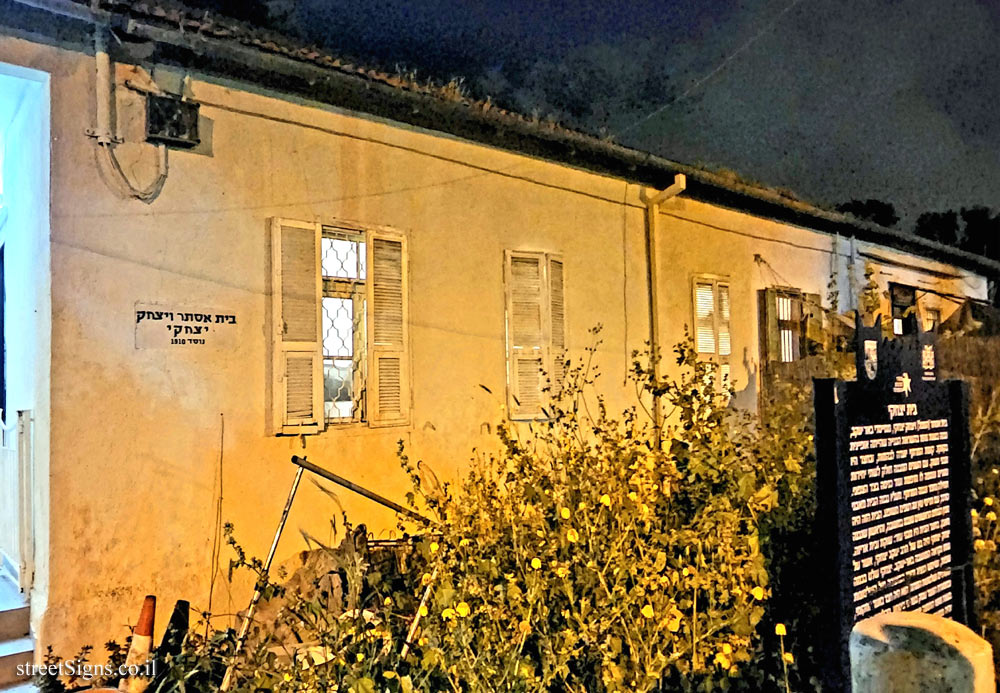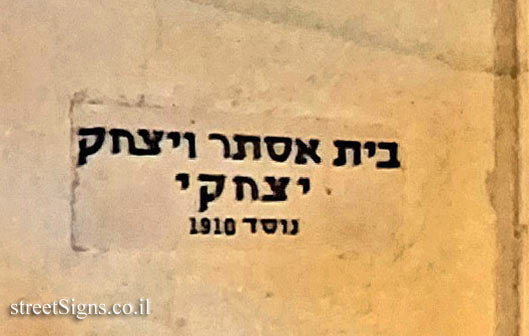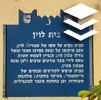The sign shape is square but its head is designed according to the silhouette of the old building of the Gymnasia Herzliya, which serves as a logo of the Council for the Preservation of Heritage Sites in Israel
The house was photographed that day by the same photographer
 Click for a larger image
Click for a larger image Another sign is on the house and it says:
House of Esther and Yitzhak Yitzhaki
Founded in 1910
 Click for a larger image Translation of the text on the sign
Click for a larger image Translation of the text on the sign:
Symbol of the Council for the Preservation of Israeli Heritage Sites
The emblem of Be’er Ya’akov Local Council
The emblem of the Ministry of Culture and Sport
Beit Yitzhaki The Esther House (Hampel) and Yitzhak Yitzhaki, one of the founders of Beer Yaakov, were built in 1910, inspired by the construction that was typical of the Caucasus. The basement was intended for cattle, and there were farm buildings in the yard. Over the years, the building was divided into two residential units and a balcony and another entrance on the north side were added.
The basement was first excavated and built. Above it, the house was built of kurkar stones, with wooden shutters and a sloping tiled roof. This house was one of the first houses built in the colony, and the first to be built of stone. In the yard of the house were auxiliary buildings: a trough and a packing house.
Yitzchak Yitzhaki was the son of Rabbi Yaakov Yitzhaki, after whom the Moshava Beer-Yaakov was named. Yitzhaki spoke several languages, and served as the colony’s representative and spokesman before the Turkish and Mandate authorities. He was a member of the local committee, and within the committee dealt with security, agriculture and health matters.
In 1918, Yitzhaki was appointed security officer of Beer Yaakov and was in charge of purchasing weapons from the English. In 1932 he served as director of the "Amamit" HMO branch.
Esther, his wife, was active in the Po’alei Zion movement and greatly assisted her husband Yitzhak in all the farm work and public activities in the young colony.
[Image]
Yitzhak and Esther on the balcony at the entrance to the house (courtesy of the Yitzhaki family)

 Click for a larger image
Click for a larger image  Click for a larger image
Click for a larger image  Click for all signs belonging to Heritage Sites in Israel
Click for all signs belonging to Heritage Sites in Israel
 48 Meter |
48 Meter |  57 Meter |
57 Meter |  157 Meter |
157 Meter |  269 Meter |
269 Meter |  305 Meter
305 Meter